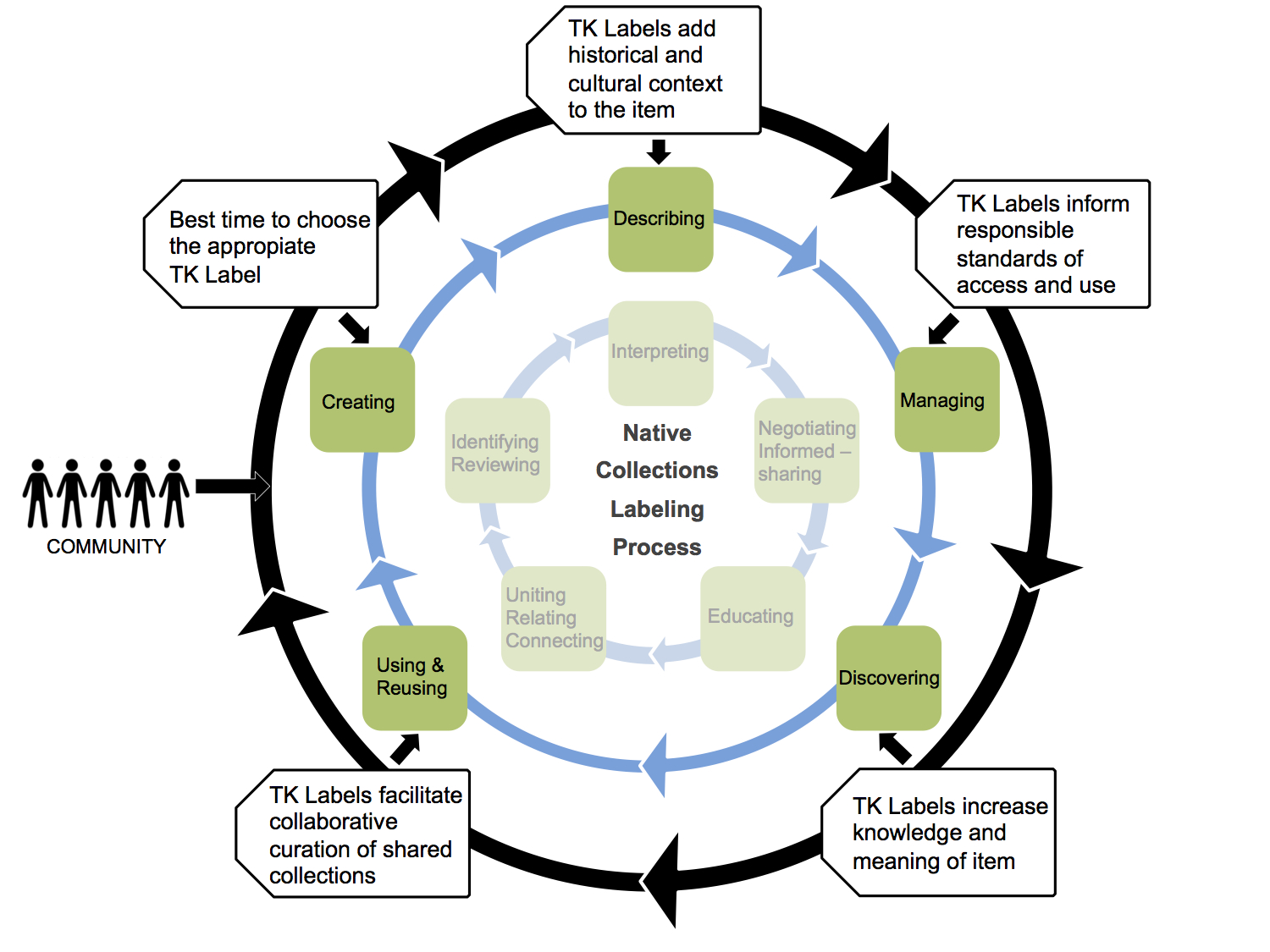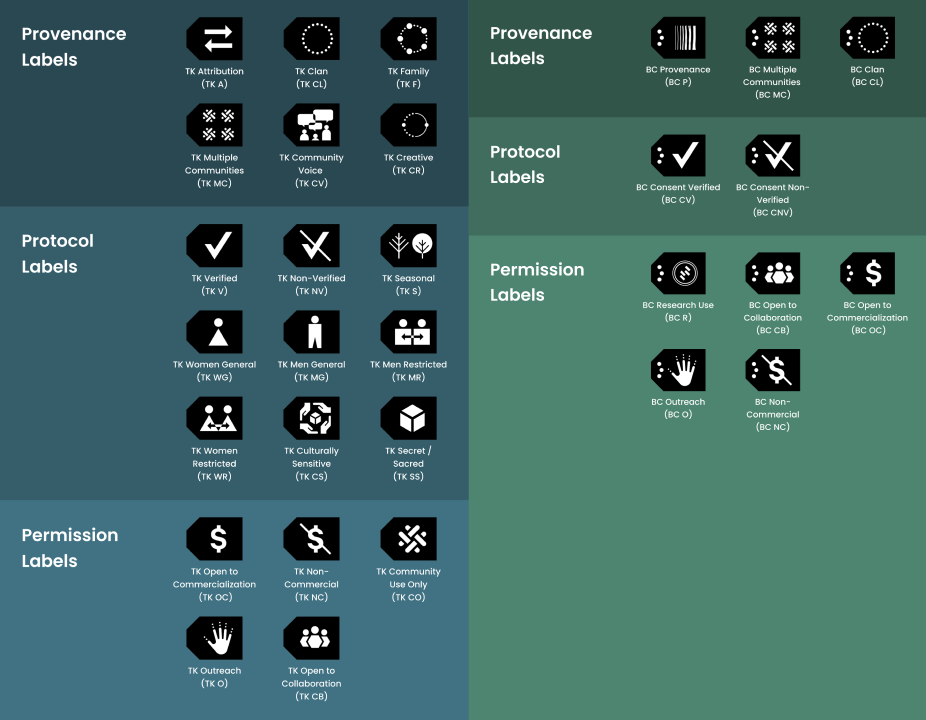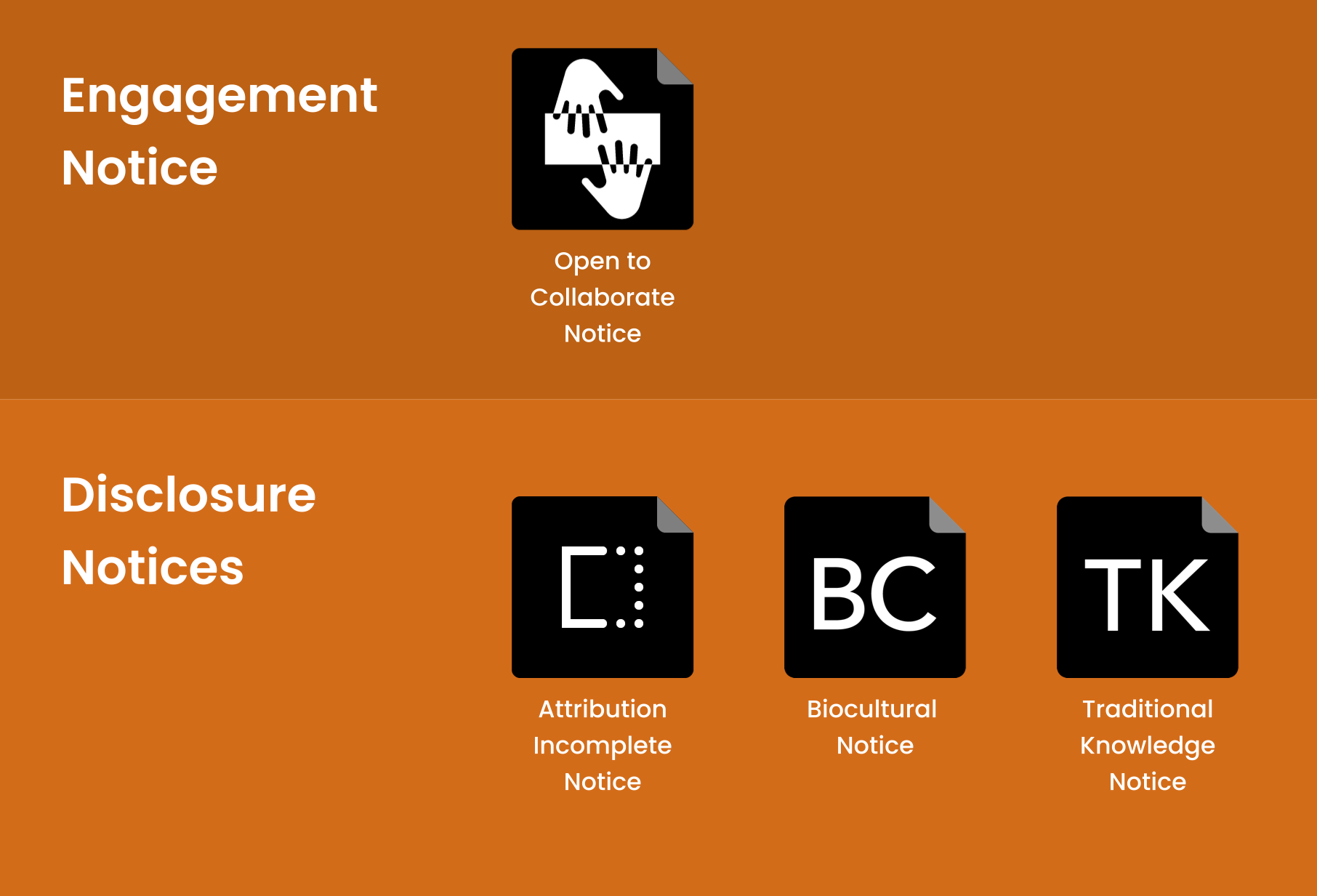TK Labeling

The TK Labeling initiative is a strategy for making visible and rendering active already existing community practices that have been historically lost, silenced or missing from collections themselves. Added at any time during the digital lifecycle, the flexibility in this labeling strategy is in its capacity to transform each stage of the digital lifecycle in ways that not only enhance collections but also bring about new kinds of meaningful relationships with the communities from which these collections derive.
Typical models of curation imply a neutral cultural, social and historical field and promote “describing” and “sharing” without notions of vetting materials beyond Western legal systems of copyright. Instead, a model of digital heritage stewardship infusing Native American knowledge circulation systems through the idea of labels, for instance, promotes the care and stewarding of belongings based in reciprocal curation. This model of curation involves a set of practices that redefine and interrupt the standard workflow of the digital lifecycle, where content seems devoid of context or culture and where processes of discovery and re-use do not take into account colonial collecting practices, current political situations, and the biased classification systems that permeate curation models.







